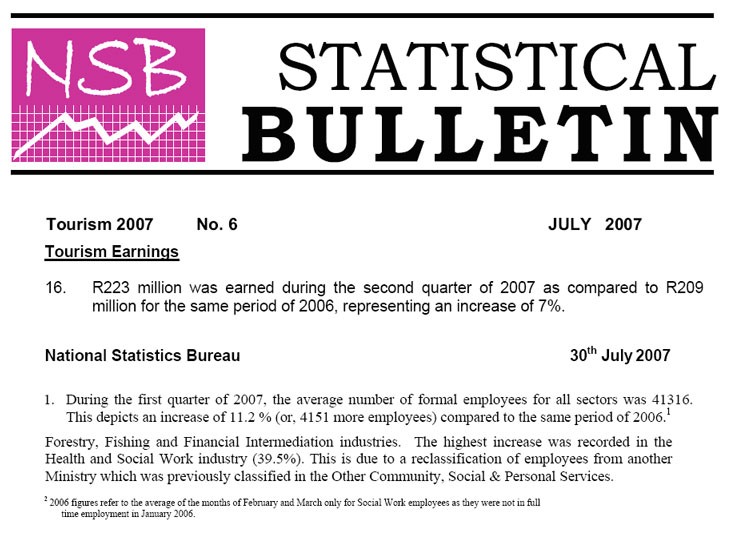


This week government propaganda on the publicly funded state broadcasting media has concentrated on scratching the bottom of the barrel to find good news. It started with a lengthy interview which President Michel gave exclusively to the SBC that was broadcast in full last Sunday evening. Ostensibly, it was to mark Mr Michel’s 365 days in office after his election in 2006.
On Monday, it was the turn of Mr Jude Louange, SPPF’s eternally smiling presenter, with his monthly half hour propaganda piece masquerading as a credible review of economic issues. The programme generally would not broadcast lies but it is known to be very economical with the truth. Last Monday evening it did not disappoint.
The programme started with a claim that the number of people in formal employment increased by 4151 in the first three months of this year compared to the same period last year. The programme based its claim on statistics published b y the National Statistics Bureau (NSB). These seemingly positive statistics were grabbed by Louange and the government to make the case that there is real improvement in the economy in the first year of Mr Michel’s mandate.
There is no indication that NSB was conniving with the Government to spread false information on the real state of the economy in support of the SPPF or Mr Michel. However, NSB’s comment that the figures “depicts an increase of 11.2%” in the number of employees, exhibits a serious lack of professionalism on the part of the officials involved.
The first thing that strikes one with the claim that 4151 new jobs were filled in the first three month of the year compared to the same period in 2006 is, where were these people before they got these jobs? Since there has been “an increase” in employment, they must have previously been unemployed. Did we have that level of unemployment in the first three months of last year?
According to NSB the working population (those between the age of 15 and 65) in the first three months of 2006 was 59,166. Hence, the new jobs represent 7% of the working population at that time. Is this a credible claim or have we been lied to previously? The devil is in the detail.
Further down in the table it published, NSB admitted that it reclassified a large number of government employees from the heading Other Community, Social and Personal Services to the heading Health & Social Work. This re-jigging involved 605 employees.
Furthermore, NSB said, a number of social work employees who were working part time for the government in January 2006 were absorbed on the government payroll as full time employees. Although NSB did not say so, it was all for election purposes. The number of workers involved, we have been able to extract from comparing the figures of both years, is 1913. Therefore, the 39.5% increase under this classification must be taken with a pinch of salt. Turning part-time employees to full time ones for election purposes cannot be economic progress or real new jobs in the economy.
Our analysis also shows that the number of employees in the construction industry increased by 1092 during the period under comparison. This was entirely in the private sector where there is no information available as to how many expatriates are working. Everyone in
Likewise, in the Hotel & Restaurant classification, which showed an increase of 444 new employees, there is no information as to how many employees are expatriates. All the new five star hotels have been given concession to import as many expatriate workers as they want without question.
Considering all these, we have calculated that the actual number of new jobs for Seychellois created during the period under review is only 1400. This is meagre considering that investments in the tourism over the past year have been in the hundreds of millions of dollars.
The statistics does show, however, that the Government remains the biggest employer after the parastatal SMB. The number of people working for the government in the first three months of the year is 13,472. Six thousand and nineteen (6019) of them work in Public Administration – almost 10% of the working population. This size of bureaucracy exists only in communist countries. The wage bill of the government, based on the average salary of 3697 per month comes to SR 500,000,000 a year. In comparison, the total revenue collected by the government during the first three months of 2007 was only SR 535,000,000.